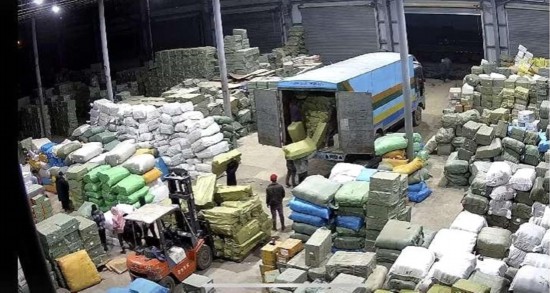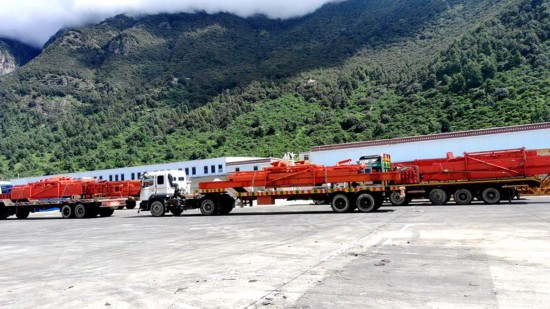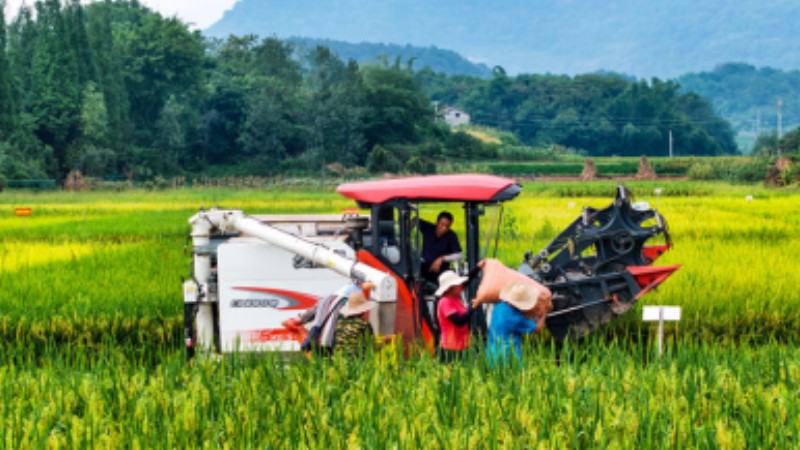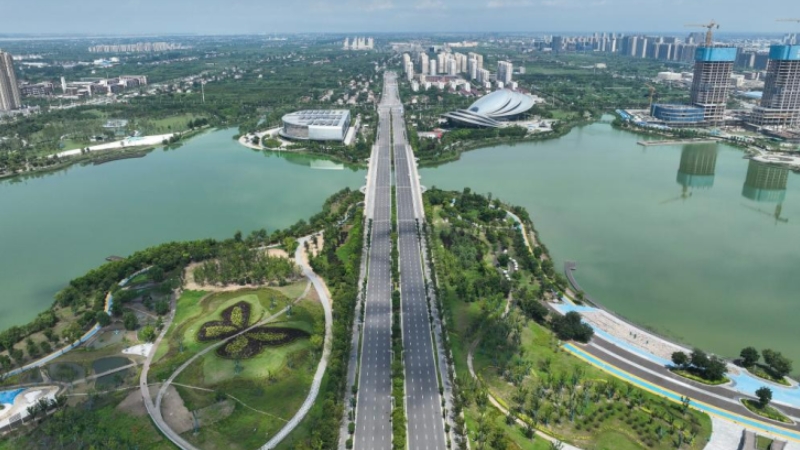Xizang's Gyirong port becomes passageway to South Asia under BRI
The Gyirong port in Shigatse city, southwest China's Xizang Autonomous Region has become an important gateway of the country's opening up to South Asia, thanks to the Belt and Road Initiative (BRI).
Located in Gyirong, a charming county on the China-Nepal border, the port is an ancient commercial site along the Tubo-Nepal Road, a pivotal historic route for exchanges between China and South Asian countries.

Photo shows the Gyirong port in Gyirong county, Shigatse city, southwest China's Xizang Autonomous Region. (Photo/Ma Xueliang)
"I have witnessed the development of the Gyirong port," said Li Chaohua, secretary-general of the trade association of the Gyirong Border Economic Cooperation Zone.
Li recalled that Gyirong port had almost no infrastructure to support its development when he arrived there in 2015.
Ma Xueliang, an executive of an international logistics company branch at the Gyirong port, holds a similar view. "When the Gyirong port opened in 2015, there was nothing but stunning natural scenery there," Ma said.
As an important node in the Belt and Road network, the Gyirong port became a port between China and Nepal in 2014. It was designated as an international port in 2017, thereby allowing access to individuals from countries besides China and Nepal. In March 2022, the Gyirong Border Economic Cooperation Zone was approved to be established, making it the 18th of its kind in China and the first in Xizang.

Photo shows goods for export at the Gyirong port in Gyirong county, Shigatse city, southwest China's Xizang Autonomous Region. (Photo/Ma Xueliang)
The Gyirong port has since developed characteristic industries including international trade, modern logistics, processing and border tourism, accelerated the building of an important gateway of China's opening up to South Asia, and deepened its participation in the BRI cooperation to promote stability and economic and social development in the border area.
Since 2016 when the Gyirong port began large-scale construction, it has continuously improved its infrastructure, with logistics parks, yards, and parking lots added. There are 15 logistics enterprises and over 40 trading enterprises here, Li said, adding that he was honored to participate in the construction of the port and witnessed its growth as a thriving international port.
The BRI has brought huge opportunities for enterprises at the Gyirong port. "Our company's main business is procurement agency services for materials used in bridge construction along the Belt and Road," Ma said.
Ma added that the company also handles general merchandise, including clothing, fabrics, and walnuts from northwest China's Xinjiang Uygur Autonomous Region, apples from northwest China's Gansu Province, and local wild scallions. "The daily export volume of general merchandise at the Gyirong port reaches 500 tonnes," said Ma.

Photo shows trucks loaded with goods for export at the Gyirong port in Gyirong county, Shigatse city, southwest China's Xizang Autonomous Region. (Photo/Ma Xueliang)
"Jumping on the new energy vehicle (NEV) bandwagon, we are changing the export structure and shifting from low to high value-added products. After the Gyirong port entered its peak season in early August this year, exports of NEVs through the port reached 30 per day, and the figure is expected to hit 70 in October," said Li.
Li added that relevant policies will be introduced to promote high-quality bilateral economic development in the Gyirong Border Economic Cooperation Zone.
Photos
Related Stories
- County in SW China's Xizang establishes river chief system to protect water environment
- Exhibition of Xizang's culture attracts throngs of visitors
- Xizang's high-quality development charts course for regional growth and beyond
- Infographic: Xizang witnesses astounding development 72 years after peaceful liberation
- Spectacular 'tree of the earth' in China's Xizang
Copyright © 2023 People's Daily Online. All Rights Reserved.









